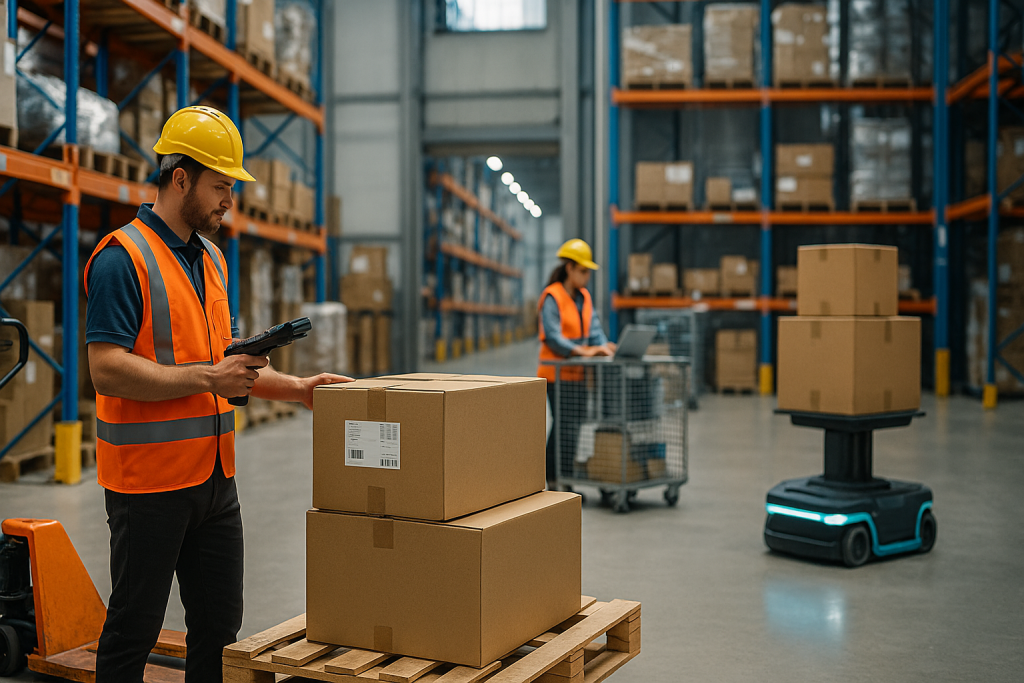By Martin Vassilev / 29 Sep, 2025
In today’s hyper-competitive and unpredictable global economy, businesses across North America are reevaluating how they manage their supply chains and storage. Traditional long-term warehouse contracts no longer align with the volatility of modern commerce. Instead, flexible warehousing—a dynamic, scalable approach to storage and fulfillment—is emerging as the cornerstone of sustainable growth, cost savings, and operational agility.
This shift is not merely a trend; it’s a strategic transformation that reflects changing consumer behavior, technological innovation, and the globalization of supply chains.
Traditional warehouse leases often lock companies into rigid, multi-year commitments. In contrast, flexible warehousing offers pay-as-you-go models that allow businesses to expand or contract their storage footprint depending on seasonal demand, market fluctuations, or unexpected disruptions.
E-commerce brands, for example, benefit enormously from this model. During peak seasons, they can scale operations without committing to unused capacity in off-peak months. As highlighted in On-Demand Warehousing Explained, the ability to align warehousing costs directly with revenue cycles is critical to preserving profitability.
Online retail continues to surge, with customers expecting same-day or next-day shipping. Businesses can no longer rely on a single static warehouse location. Instead, they need distributed fulfillment centers strategically located across North America to shorten delivery times.
Flexible warehousing enables access to regional hubs—from Ottawa to Dallas—that enhance speed and customer satisfaction. This approach aligns with Calgary and Dallas Logistics Hubs, which showcase how location diversity drives competitive delivery performance.
Global supply chains remain vulnerable to disruptions from geopolitical tensions, labor shortages, or climate-related events. Flexible warehousing mitigates these risks by allowing businesses to diversify inventory storage and avoid bottlenecks.
A study from the U.S. Department of Commerce underscores how resilience in supply chains requires decentralization—a principle central to flexible warehousing strategies.
In major cities like Toronto, Vancouver, and New York, industrial real estate costs are skyrocketing. Committing to a fixed lease can tie up valuable capital. Flexible warehousing solutions allow businesses to scale up without the burden of ownership or long-term liability, optimizing working capital for growth.
Artificial Intelligence (AI) has become an indispensable tool in optimizing flexible storage. AI helps predict demand surges, streamline inventory management, and reduce waste. The integration of smart systems is highlighted in How AI Is Transforming the Logistics Industry in 2025, where machine learning models empower businesses to adapt in real time.
From automated picking systems to drone inventory checks, robotics reduce dependency on manual labor while enhancing accuracy. These innovations make short-term and shared warehouse solutions more efficient, giving businesses access to high-tech infrastructure without heavy upfront investment.
For deeper insights, The Future of Warehouse Automation provides detailed strategies businesses can adopt.
Flexible warehousing thrives on transparency. Real-time tracking of shipments, stock levels, and customer demand ensures that businesses can dynamically adjust inventory distribution. Solutions such as real-time inventory updates and predictive analytics are no longer optional—they are core to survival in the flexible warehousing era.

Retailers dealing with holiday surges or event-driven spikes can secure temporary storage space and scale down afterward. This avoids the inefficiencies of overcommitted long-term contracts.
Expanding into new markets becomes easier with flexible warehousing. For instance, a Canadian e-commerce brand can trial U.S. markets by storing products in a temporary warehouse near Chicago without signing a five-year lease.
By eliminating underutilized warehouse space, businesses reduce overhead. Moreover, shared warehousing models distribute costs among multiple tenants, further lowering expenses. Businesses that embrace lean practices, as outlined in Lean Warehousing Benefits, achieve both efficiency and profitability.
The ability to pivot quickly—whether expanding into new regions or adapting to shifting supply chain conditions—gives businesses a competitive edge. Agility has become the defining feature of post-pandemic logistics.
Many organizations still rely on outdated ERP or WMS systems. Transitioning to flexible models requires investment in modern cloud-based systems capable of seamless integration.
Managing consistent service levels across various warehouse partners can be challenging. Strong vendor management and contractual standards are necessary to maintain quality.
With inventory dispersed across multiple locations, businesses must prioritize robust security measures. Ensuring compliance with local and international trade regulations is also crucial, especially for cross-border e-commerce.
E-Commerce Expansion in Ottawa: Businesses utilizing Ottawa Logistics Solutions have leveraged flexible warehousing to scale operations, reduce costs, and serve regional customers faster.
Cross-Border Retailers: Companies entering the U.S. market from Canada have benefited from flexible warehouse models that minimize risk while testing market demand.
Technology-Driven Growth: Firms integrating AI and robotics within flexible spaces have achieved greater accuracy and reduced fulfillment times, positioning themselves as leaders in customer satisfaction.
The flexible warehousing model will continue to dominate logistics strategies for years to come. As sustainability pressures grow, businesses will also seek eco-friendly and energy-efficient warehousing options. The shift toward green logistics is already visible in initiatives like The Role of Green Logistics, which emphasizes the importance of sustainable infrastructure.
Furthermore, as more companies embrace distributed warehousing networks, competition will drive innovation in real-time data sharing, advanced robotics, and predictive analytics. External resources like Logistics Management Magazine confirm that distributed, on-demand warehousing will be the dominant model by 2030.
Flexible warehousing is not just the future—it is the present solution for businesses seeking resilience, agility, and profitability in North America. From reducing costs to expanding reach and ensuring customer satisfaction, the benefits are clear.
Companies that delay adopting this model risk being outpaced by competitors already leveraging on-demand solutions, cutting-edge automation, and distributed logistics networks. For businesses ready to stay ahead, partnering with industry leaders in flexible warehousing is the logical next step.

“Thanks to Byexpress all my shipping and fulfillment costs are in line now”

“All my issues were solved by Byexpress team that I had with pervious 3pl provider.”

“Thank you Byexpress team could not done it without you guys.”

“Their integration and customer service were the key for me”

“Outstanding delivery service! The package was well-packaged, and
the delivery team was professional and courteous”

“Great and knowledgeable team to work with.”

Thanks, guys, for reducing my shipping rates
Ottawa Office
2411 Holly Lane
Ottawa, ON, K1V 7P2
Toronto Office
13-280 West Beaver Creek Road Unit #136
Richmond Hill, ON, L4B 3Z1
Alexandria Office
173 Kenyon Street West
Alexandria, ON, K0C 1A0
Montreal Office
4388 Saint-Denis Street Unit #200
Montreal, QC, H2J 2L1
California Office
155 North Riverview Drive
Anaheim Hills, CA, 92808
Call Us
Toll-Free: 1-866-744-7122
Local : 613-739-3000
Email Us
Multilingual Services










